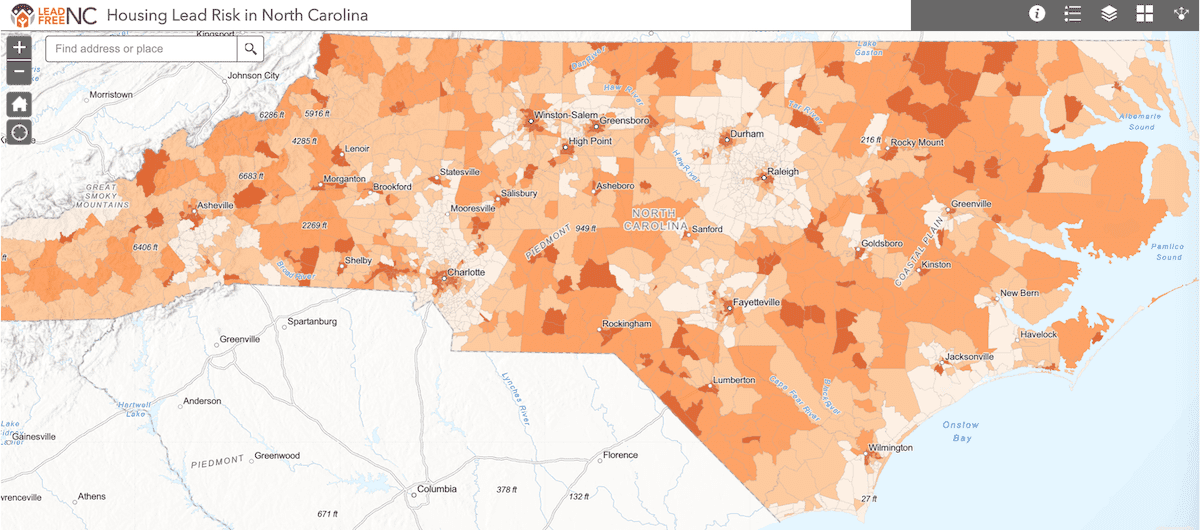This week is National Lead Poisoning Prevention Week, and it’s a great time to revisit some good tips for keeping kids safe from toxic lead exposure.
The good news is that in North Carolina, most children have very low risk of lead exposure. Only about 1 percent of children tested each year have elevated lead levels. Yet, with consequences from toxic exposure so enormous, we must take steps to provide a clean, safe environment for kids. Learn more about the risks here.
New tool helps you explore lead risk and take steps to protect your kids
This week, NC Child is launching a new website for Lead Free NC, a campaign to help families explore their local lead risk and connect to resources for lead prevention and treatment. On the new site, you can explore different tools, including the new, statewide, NC Housing Lead Risk Map, developed in partnership with the Duke Environmental Law & Policy Clinic. This will help you identify and address potential lead hazards in your home and connect to certified professionals to help you remove lead.
Are you planning an upcoming move or thinking about renovating your home?
Lead-based paint continues to be the biggest source of children’s lead exposure. There are easy, straightforward steps you can take to make sure your little ones are safe from legacy lead in paint. If your home was built before 1978, there is a good chance it has lead-based paint. Lead from paint can be present in the dust around your house and can chip off surfaces that get a lot of wear-and-tear such as window sills, doors and door frames, stairs, banisters, and porches. So it’s important to keep all paint in good shape and clean up dust frequently. If you think your home has lead-based paint, the EPA recommends the following:
- Don’t try to remove lead-based paint yourself;
- Always keep painted surfaces in good condition to minimize deterioration;
- Get your home checked for lead hazards. Find a certified inspector or risk assessor near you;
- Regularly wet-clean floors, window sills, and other surfaces;
- When renovating, repairing, or painting, hire only EPA- or state-approved Lead-Safe certified renovation firms;
- Wash children’s hands, bottles, pacifiers and toys often.
Learn more helpful tips from the EPA’s booklet, “Protect Your Family from Lead in Your Home,” and the UNC Institute for the Environment’s fact sheet on preventing lead exposure in the home (also available in Spanish).
Make a plan with your child’s health care provider
It’s important to continue to take our children to routine well-visits and make sure that they are getting regular lead screenings – even during COVID-19.
“Even at the lowest levels of exposure, lead can reduce IQ and harm children’s ability to concentrate and focus in school. The effects are permanent and can affect a child’s long-term health outcomes. Lead is especially harmful to children under the age of 6. At this age, children’s bodies are undergoing a lot of growth and development and are more sensitive to the damaging effects of lead. Making sure our children are attending their pediatric appointments and getting screened for lead is important for safeguarding their long-term health.” — Elizabeth Hudgins, Executive Director of NC Pediatric Society
Planning an upcoming well-visit? NC Child put together a helpful guide for speaking with your health care provider about lead. You can read it here.
The best way to protect kids from lead exposure is to be proactive about getting rid of lead from the places they live, learn, and play. Let’s keep working together towards a lead-free North Carolina.
Thank you to the Duke Endowment, whose support made the Lead Free NC website possible.



